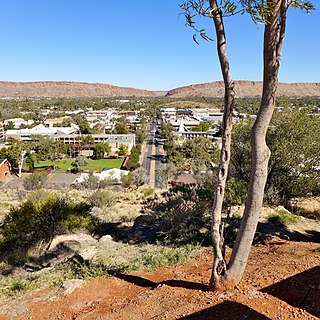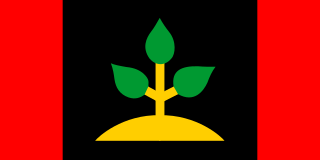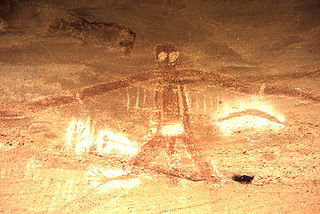
Darwin is the capital city of the Northern Territory, Australia. With an estimated population of 147,255 as of 2019, the city contains the majority of the residents of the sparsely populated Northern Territory.

The Northern Territory is an Australian territory in the central and central northern regions of Australia. The Northern Territory shares its borders with Western Australia to the west, South Australia to the south, and Queensland to the east. To the north, the territory looks out to the Timor Sea, the Arafura Sea and the Gulf of Carpentaria, including Western New Guinea and other islands of the Indonesian archipelago.

Alice Springs is the third-largest town in the Northern Territory of Australia. Known as Stuart until 31 August 1933, the name Alice Springs was given by surveyor William Whitfield Mills after Alice, Lady Todd, wife of the telegraph pioneer Sir Charles Todd. Known colloquially as 'The Alice' or simply 'Alice', the town is situated roughly in Australia's geographic centre. It is nearly equidistant from Adelaide and Darwin.

Mandawuy Djarrtjuntjun Yunupingu, formerly Tom Djambayang Bakamana Yunupingu; skin name Gudjuk; also known as Dr Yunupingu was an Australian musician and educator.
The Central Australian Aboriginal Media Association (CAAMA) is an organisation founded in 1980 to expose Aboriginal music and culture to the rest of Australia. It started with 8KIN-FM, the first Aboriginal radio station in the country. Based in Alice Springs, the organisation is particularly focused on the involvement of the local Indigenous community in its production. CAAMA is involved in radio, television and recorded music.
Imparja Television (IMP) is an independent Australian television station servicing over 3,600,000 km2 (1,400,000 sq mi), across six states and territories: Northern Territory, South Australia, Tasmania, Queensland, New South Wales and Victoria. It is based in Alice Springs, and is controlled by Aboriginal people through ownership by Imparja Television Pty Ltd.

Vincent Lingiari AM was an Australian Aboriginal rights activist and member of the Gurindji people. In his early life he started as a stockman at Wave Hill Station, where the Aboriginal workers were given no more than rations, tobacco and clothing as their payment. After the owners of the station refused to improve pay and working conditions at the cattle station and hand back some of Gurindji land, Lingiari was elected and became the leader of the workers in August 1966. He led his people in the Wave Hill walk-off, also known as the Gurindji strike.
The Garma Festival of Traditional Cultures (Garma) is Australia's largest Indigenous cultural gathering, taking place over four days each August in northeast Arnhem Land, in the Northern Territory, Australia. Hosted by the Yothu Yindi Foundation, Garma is a celebration of the cultural traditions of the Yolngu people, and a major community gathering for the clans and families of the Arnhem Land region. The event showcases traditional miny'tji (art), ancient story-telling, manikay (song), and bunggul (dance). It is held at Gulkula, a significant Gumatj ceremonial site about 40 kilometres (25 mi) from the township of Nhulunbuy, attracts more than 2500 guests each year and is often sold out months in advance.
The Laragiya language, also spelt Larrakia, and also known as Gulumirrgin, is an Australian Aboriginal language spoken by just six people near the city of Darwin in northern Australia as of 1983. Only 14 people claimed to know the Laragiya language in 2016.

The Australian National Aboriginal and Torres Strait Islander Education Policy (AEP) is a national policy adopted by the Government of Australia by each State and Territory government. The policy was first introduced in 1989 and is the foundation of education programs for all Indigenous Australians.

The Larrakia people are a group of Aboriginal Australian people in and around Darwin in the Northern Territory. The Larrakia, who refer to themselves as "Saltwater People", had a vibrant traditional society based on a close relationship with the sea and trade with neighbouring groups such as the Tiwi, Wadjiginy and Djerimanga. These groups shared ceremonies and songlines, and intermarried.

Batchelor is a town in the Northern Territory of Australia. The town is the current seat and largest town of the Coomalie Shire local government area. It is located 98 kilometres (61 mi) south of the territory capital, Darwin. A number of residents commute to Darwin and its suburbs for work. In the 2016 census, Batchelor recorded a population of 507 people, with 36% of Aboriginal and Torres Strait Islander origin.
Titjikala is an Aboriginal community in the south of the Northern Territory of Australia. At the 2011 census, Titjikala had a population of 201.

An Australian Aboriginal sacred site is a place deemed significant and meaningful by Aboriginal Australians based on their beliefs. It may include any feature in the landscape, and in coastal areas, these may lie underwater. The site's status is derived from an association with some aspect of social and cultural tradition, which is related to ancestral beings, collectively known as Dreamtime, who created both physical and social aspects of the world. The site may have its access restricted based on gender, clan or other Aboriginal grouping, or other factors.

The Aboriginal Peoples Television Network is a Canadian specialty channel. Established in 1992 and maintained by governmental funding to broadcast in Canada's northern territories, APTN acquired a national broadcast licence in 1999. It airs and produces programs made by, for and about Indigenous peoples in Canada and the United States. Based in Winnipeg, Manitoba, it is the first network by and for North American indigenous peoples.

Timmy Murmurrga Burarrwanga, also known by his tribal name Djawa Djuwait, is an Aboriginal Australian who belongs to the Gumatj clan. He is a business operator, cultural leader and current chairman of the Yirrkala Dhanbul Aboriginal Corporation, a community development organization associated with the Bunuwal group of companies. He was formerly a director of the Lanyhapuy Homelands Association, and is heavily active in the outstation movement, numerous other Aboriginal organizations, and has lent his support to the One Laptop Per Child Australia group.
Ngukurr, formerly Roper River Mission (1908−1968), is a remote Aboriginal community on the banks of the Roper River in southern Arnhem Land, Northern Territory.

Yingiya Mark Guyula is an Australian politician and a Yolŋu man of the Djambarrpuyŋu clan and the Liya-Dhälinymirr people. He is an independent member of the Northern Territory Legislative Assembly for the seat of Mulka in north-east Arnhem Land. He previously represented Nhulunbuy from 2016 to 2020. He is the only independent Indigenous member of parliament in the Northern Territory and campaigned on a platform of self-determination for Yolŋu people.

Bagot Community is an Aboriginal community in the Northern Territory of Australia located in Ludmilla, a northern suburb of the city of Darwin. It was established in 1938 as the Bagot Aboriginal Reserve, when the Aboriginal residents were moved from the Kahlin Compound, it was also sometimes referred to as the Bagot Road Aboriginal Reserve.
Kathleen Mary Mills, also known as Mooradoop and Aunty Kathy, was an Australian community leader, singer, Aboriginal elder and activist. She had a large family, all musical, with several of her daughters being well known as the Mills Sisters.
References: <www.radiolarrakia.org>; Reflections: 40 Years on From the 1967 Referendum 2007; ACMA; Territory Regional Weekly NT; ALRM Inc Newsletter 2007; Radio Larrakia Interviews 2007-2008 Contact <voice@radiolarrakia.org>, Yothu Yindi Foundation Garma Report 2009, CDU Garma Report 2009.












